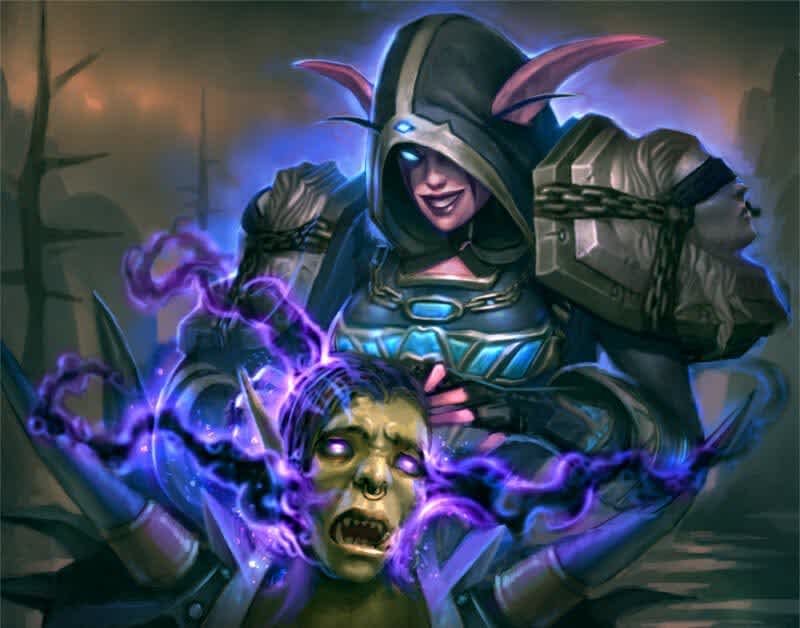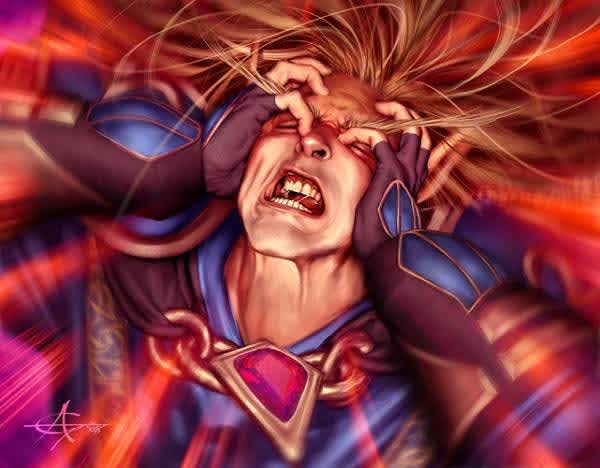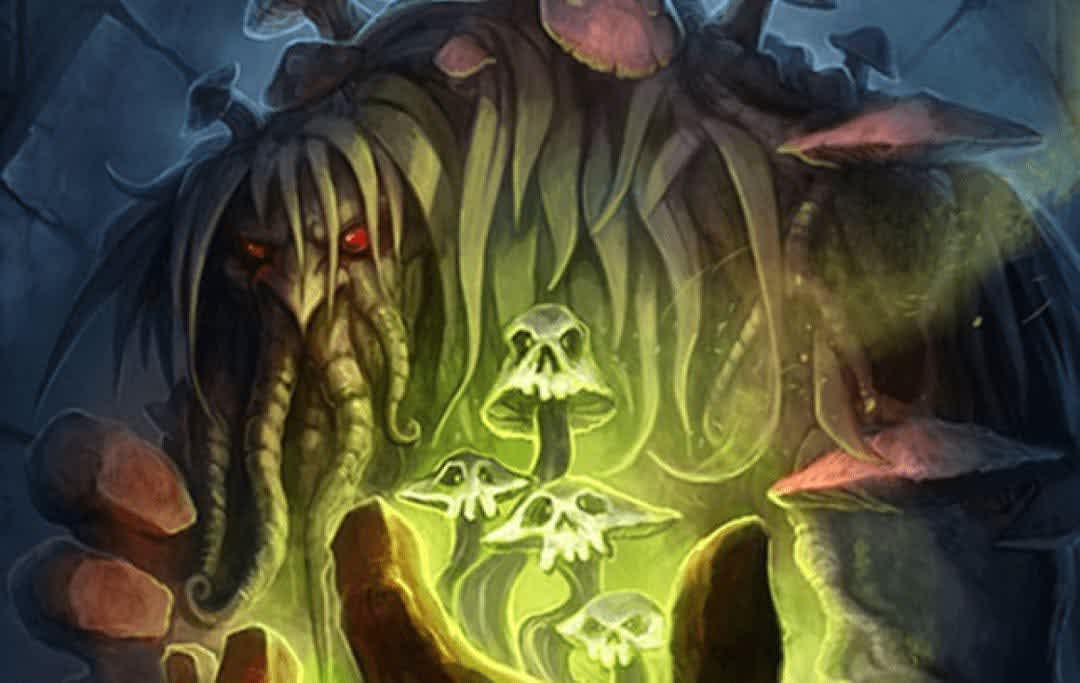Hearthstone Psychology – Figuring Out What Kind of a Player You Are
The third installment of this series focusing on the importance of personal improvement and competitive psychology (you can find the first part here and the second here) will focus on the different psychological profiles ranging from our motivation to our preferred tactics and strategies. Understanding our preferences and the limits of our comfort zone is very important: it is the first step towards being able to expand upon them.
It took us two articles and over 2000 words to establish how important you are when it comes to your competitive experience – so now that this point has been hammered home for good, it’s time to take a look at what kind of a player you are. While we’re all special snowflakes, there are still specific categories that apply to us when you consider the many different facets of the gameplay experience. Understanding what motivates you to play is perhaps the most important aspect of it all.
One of the classic takes on this subject is Mark Rosewater’s psychographic profiles for Magic players, “categories based on [the players’] psychological make-up”. Since I don’t think I can explain this terminology better than MTG’s head designer could, allow me to quote him in detail on the three original ones:
“Timmy cares more about the quality of his win than the quantity of his wins. For example, Timmy sits down and plays ten games. He only wins three games out of ten but the three he wins, he dominates his opponent. Timmy had fun. Timmy walks away happy. Each set, R&D makes sure to design a certain number of cards for Timmy. Timmy cards, as we call them, tend to be big creatures or spells with big effects. In general, Timmy cards are exciting but not too economical.”
“Johnny is the creative gamer to whom Magic is a form of self-expression. Johnny likes to win, but he wants to win with style. It’s very important to Johnny that he win on his own terms. As such, it’s important to Johnny that he’s using his own deck. Playing Magic is an opportunity for Johnny to show off his creativity. Johnny likes a challenge. Johnny enjoys winning with cards that no one else wants to use. He likes making decks that win in innovative ways. What sets Johnny apart from the other profiles is that Johnny enjoys deckbuilding as much as (or more than) he enjoys playing. Johnny loves the cool interactions of the cards. He loves combo decks. Johnny is happiest when he’s exploring uncharted territory.”
“Spike is the competitive player. Spike plays to win. Spike enjoys winning. To accomplish this, Spike will play whatever the best deck is. Spike will copy decks off the Internet. Spike will borrow other players’ decks. To Spike, the thrill of Magic is the adrenalin rush of competition. Spike enjoys the stimulation of outplaying the opponent and the glory of victory. Spike cares more about the quantity of wins than the quality. For example, Spike plays ten games and wins nine of them. If Spike feels he should have won the tenth, he walks away unhappy.”

Of course, there are hybrids and many variations and further takes on this particular topic, but these three broad categories are perfectly good for us as a mirror. The most brutal truth of competition is that winning comes at the cost of fun, and this ratio gets worse the higher levels you’re striving for For some of us, that’s hard to swallow. I’d love to get Legend 1 with a homebrew deck but at this point it’s tough enough to make it past my personal best with Legend 5 using a meta one.
There are many dumb terms that label Spike players as “meta slaves” or boring people but they are clearly the best-equipped for reaching their competitive goals. Climbing the ladder on your own terms is a luxury: it will take more effort and more time if you insert your personal preferences in the process. It’s not an incorrect decision per se, but it is one that you need to make consciously. It’s perhaps also a better choice once you’ve already proven to yourself that you can reach your goal with the “normal” toolkit. Again, “my way or the highway” is a massive skill penalty: it will lengthen your climb or possibly make it impossible entirely. So go ahead and try to find that little bit of a Spike in you if you haven’t yet: it will go a long way, I can promise you that.
This isn’t the only aspect of “player profiles” to consider. Beyond your motivation, there’s also the kind of gameplay experience that you prefer. This is basically what it boils down to in Hearthstone: do you like to ask questions or to answer them during a match?
The two basic lessons you end up learning as a Hearthstone player is the importance of tempo and value. Many new players fail to make objectively optimal trades and regularly get punished as a result – or on the other edge of the spectrum, they trade so much that they give infinite time to their opponent to mount a comeback.

Again, there’s a classic article on this subject titled Who’s the Beatdown?, which highlights the fact that there is always a faster and a slower deck in a given game and the roles should be treated accordingly – but there’s also a psychological component to this.
Personally, I’ve always been one of those players who like to trade more than I should. It feels safer knowing that I have a resolved board state at the end of my turn and that I minimize my opponent’s options. The myriad of potential punishes swirl in my mind as I try to figure out the optimal move, and the little monkey in my head is always more satisfied when I take that value-trade instead of trying to close the game out quickly. It’s perhaps the greatest irony of my Hearthstone experience that I’ve always performed better with aggressive decks: I do pretty well once I switch my mindset to asking questions from answering them.
Neither approach is better or worse than the other one by itself – if anything, the problem is having a preference in the first place. The correct choice between going face or trading depends on the matchup and the hands of the players in the given game – and if you can figure out that one of these approaches is instinctively more appealing to you, you can treat the other one as a blind spot to work on. It is one of those things that can easily be supercharged by reviewing your own games: once you’re looking at the action from outside, you’ll have a much easier time spotting the opportunities you’ve missed. Similarly, you could find that you’re taking unnecessary risks at the wrong time by prioritizing face damage at times when it is simply not needed in the match. Once you know which facet of the game comes to you naturally, you can consciously work on the other side of it. This can make a huge difference.

Sometimes, the driest set of statistics can give you a better understanding of yourself. I rarely dig into my decktracker history in detail but it’s always been clear to me that I’m an extremely streaky player. If I start my session with a bunch of losses, I won’t recover – and if I get a set of wins, I can go an incredibly long time without losing even once. This made me realize that I should not force the issue when things aren’t working out: I can just put the game aside and return whenever things click.
It got me to peak on Legend 5 so it can’t be that awful an approach – but it is precisely the sort of thing that I wouldn’t be able to get away with as a professional player as I would not get to pick and choose the times when I have to perform at the highest level based on my mood. However, in accordance with my current goals in Hearthstone, understanding this is perfectly enough. There are days where I won’t be able to get in good practice or make a decent attempt to climb. I’ll just spend it on something else. First, you need to understand your strengths and weaknesses and learn to accommodate them – fixing them is the next step, and may not even be a necessary one to take depending on your goals.
I’ve already recommended David Sirlin’s Playing to Win to you in the previous installment of the series, but I’d like to return to it once again to take a look at the playing styles he’s listed: he discusses the Turtles, the Attackers, the Obsessed and the Snakes before turning towards “the one true style” – which is essentially playing your opponent and not the game – and “the invincible”. It’s perhaps the least specific part of his otherwise excellent treatise, but it once again provides an interesting categorization beyond what we’ve discussed, a look at the kind of strategic choices we’re instinctively trying to make. Again, the best one is not having one, at least not having a strict preference: figuring out what kind of a player you are right now is so important precisely because it is the first step towards going beyond your boundaries – and on higher levels of competition, figuring out your opponent’s biases can go a long way towards pulling off a victory.
Again, if you hate a deck, try it. If you’re not a fan of a particular playstyle, master it. One of my most enduring memories of my father is from a visit to a restaurant where I was throwing a hissy-fit over having to use a fork and a knife. I explained with tortured child-logic that it’s perfectly unnecessary because I can eat the food just fine otherwise. He told me that I can do so as long as I’ve become comfortable with using a fork and a knife.
Hearthstone is a game with many kitchen utensils. Why not give them all a go? The next entry in this series will focus on the different learning processes – it might take a while to comb it all together, so hang in there. Until then, may you always queue into that favorable matchup!






